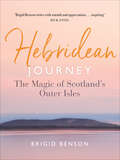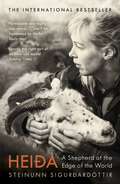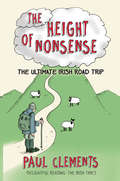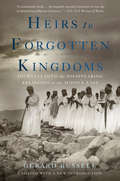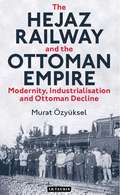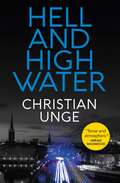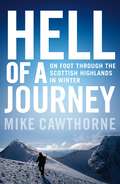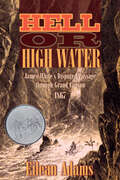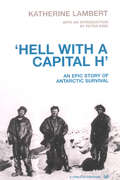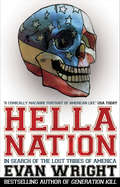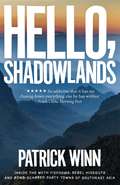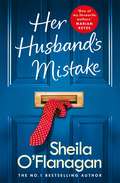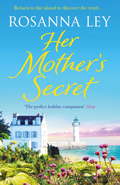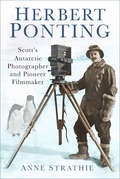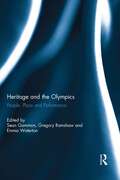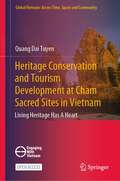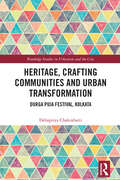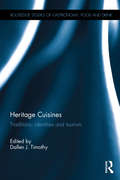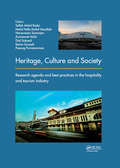- Table View
- List View
Hebridean Journey: The Magic of Scotland’s Outer Isles
by Brigid BensonWashed by the surging waves of the Atlantic Ocean, the island chain of the Outer Hebrides lies at the very edge of Europe. This richly illustrated book is a fabulous invitation to discover the distinct character of each of the islands, covering Lewis and Harris, Berneray, Grimsay, North Uist, Benbecula, South Uist, Eriskay, Barra and Vatersay, and the vibrant Gaelic culture of the islanders.From white shell sands, peaty moors and gnarly mountains to heather hills, sea-green lochs and mysterious ancient monuments, these are places of unrivalled beauty which are also home to a huge variety of wildlife on land, at sea and in the air – otters, red deer, orca, dolphins, sea eagles, grey seals and corncrake, to name but a few.Packed with outstanding experiences, fascinating insights, hidden gems and helpful information, Hebridean Journey creates the uplifting opportunity of meaningful travels and life affirming experiences in the unique magic of Scotland’s Atlantic islands.
Heida: A Shepherd at the Edge of the World
by Steinunn Sigurðardóttir'HEIDA IS A FORCE OF NATURE . . . EXACTLY THE RIGHT SORT OF MODERN ROLE MODEL' SUNDAY TIMESThe inspiring story of Icelandic sheep farmer, former model and feminist heroine Heida Asgeirsdottir has become a double prize-winning international bestseller.As heard on Radio 4's Start the WeekI'm not on my own because I've been sitting crying into a handkerchief or apron over a lack of interested men. I've been made every offer imaginable over the years. Men offer themselves, their sons . . . drunk fathers sometimes call me up and say things like: "Do you need a farmhand?" "I can lift the hay bales" "I can repair your tractors". . .Heida is a solitary farmer with a flock of 500 sheep in a remorseless area bordering Iceland's highlands. It's known as the End of the World. One of her nearest neighbours is Iceland's most notorious volcano, Katla, which has periodically driven away the inhabitants of Ljótarstaðir ever since people first started farming there in the twelfth century. This portrait of Heida written with wit and humour by one of Iceland's most acclaimed novelists, Steinunn Sigurðardóttir, tells a heroic tale of a charismatic young woman, who walked away from a career as a model to take over the family farm at the age of 23. I want to tell women they can do anything, and to show that sheep farming isn't just a man's game. Divided into four seasons, Heida tells the story of a remarkable year, when Heida reluctantly went into politics to fight plans to raise a hydro-electric power station on her land. This book paints a unforgettable portrait of a remote life close to nature. Translated into six languages, Heida has won two non-fiction prizes and has become an international bestseller.We humans are mortal; the land outlives us, new people come, new sheep, new birds and so on but the land with its rivers and lakes and resources, remains.'UTTERLY CHARMING' MAIL ON SUNDAY'REVELATORY AND INSPIRING' HERALD
The Height of Nonsense: The Ultimate Irish Road Trip
by Paul ClementsPaul Clements took to the road in search of the county tops, armed with his own rules of the road, 'Forsake all 21st century Celtic superhighways in favour of boreens'. Faced with leave he couldn't afford, Paul travelled the GMRs (Great Mountain Roads), exploring remote corners of little known counties, some very flat, and spent time with the eccentric and the quaint. Meet Cathy Rea who can see, and even smell, fairies! Listen to tales of druids, banshees, highwaymen and loose women. And learn how a poet stops Errigal's ego from deflating. P.S. Paul found only 28 tops!
Heirs to Forgotten Kingdoms: Journeys Into the Disappearing Religions of the Middle East
by Gerard RussellDespite its reputation for religious intolerance, the Middle East has long sheltered many distinctive and strange faiths: one regards the Greek prophets as incarnations of God, another reveres Lucifer in the form of a peacock, and yet another believes that their followers are reincarnated beings who have existed in various forms for thousands of years. These religions represent the last vestiges of the magnificent civilizations in ancient history: Persia, Babylon, Egypt in the time of the Pharaohs. Their followers have learned how to survive foreign attacks and the perils of assimilation. But today, with the Middle East in turmoil, they face greater challenges than ever before. In Heirs to Forgotten Kingdoms, former diplomat Gerard Russell ventures to the distant, nearly impassable regions where these mysterious religions still cling to survival. He lives alongside the Mandaeans and Ezidis of Iraq, the Zoroastrians of Iran, the Copts of Egypt, and others. He learns their histories, participates in their rituals, and comes to understand the threats to their communities. Historically a tolerant faith, Islam has, since the early 20th century, witnessed the rise of militant, extremist sects. This development, along with the rippling effects of Western invasion, now pose existential threats to these minority faiths. And as more and more of their youth flee to the West in search of greater freedoms and job prospects, these religions face the dire possibility of extinction. Drawing on his extensive travels and archival research, Russell provides an essential record of the past, present, and perilous future of these remarkable religions.
The Hejaz Railway and the Ottoman Empire: Modernity, Industrialisation and Ottoman Decline (Library of Ottoman Studies)
by Murat ÖzyükselRailway expansion was symbolic of modernization in the late 19th century, and Britain, Germany and France built railways at enormous speed and reaped great commercial benefits. In the Middle East, railways were no less important and the Ottoman Empire's Hejaz Railway was the first great industrial project of the 20th century. A route running from Damascus to Mecca, it was longer than the line from Berlin to Baghdad and was designed to function as the artery of the Arab world - linking Constantinople to Arabia. Built by German engineers, and instituted by Sultan Abdul Hamid II, the railway was financially crippling for the Ottoman state and the its eventual stoppage 250 miles short of Mecca (the railway ended in Medina) was symbolic of the Ottoman Empire's crumbling economic and diplomatic fortunes. This is the first book in English on the subject, and is essential reading for those interested in Industrial History, Ottoman Studies and the geopolitics of the Middle East before World War I.
Helicopter (tactile)
by Adrian FarnsworthThis page shows two images of a helicopter. There is a side view in the top and top view in the bottom of the page. The front of the aircraft is to the left and the tail to the right. The tail rotor has five blades in the top right of the page. The main rotor also has five blades in the centre of the page.
Hell and High Water: A blistering Swedish crime thriller, with the most original heroine you'll meet this year
by Christian UngeThe first in a new Swedish crime series featuring Tekla Berg, a fearless doctor with a remarkable photographic memory"A taut and blistering thriller with the most memorable protagonist ever. Christian Unge is in total control of his environment. It deserves to be huge" Imran Mahmood, author of You Don't Know Me"Watch your blood pressure! A tense and clever thriller" Lilja SigurðardóttirWith 85% per cent burns to his body and a 115% risk of dying, it's a miracle the patientis still alive.He only made it this far thanks to Tekla Berg, an emergency physician whose unorthodox methods and photographic memory are often the difference between life and death.Convinced that the fire was a terrorist attack - and that the patient was involved - the police are determined to question him. Almost as determined as those who would silence him at any cost. And while Tekla battles to keep him breathing, she can't shake the thought that something about him is strangely familiar . . .Tekla has always hidden her remarkable mind from her hospital colleagues, resorting to amphetamines to take the edge off the endless whirl of lucid memories. But now she'll need to call on all her wits as she's drawn into a mystery involving corrupt police, the godfather of the Uzbek mafia, and her beloved but wayward brother.Translated from the Swedish by George Goulding
Hell of a Journey: On Foot Through the Scottish Highlands in Winter
by Mike CawthorneHell of a Journey' describes what is arguably the last great journey to be undertaken in Britain: the entire Scottish Highlands on foot in one winter. On one level it is a vivid and evocative account of a remarkable trek - never attempted before - on another it celebrates the uniqueness of the Highlands, the scenery and ecology of 'the last wilderness in Europe'. The challenge Mike Cawthorne set himself was to climb all 135 of Scotland's 1,000-metre peaks, which stretch in an unbroken chain through the heart of the Highlands, from Sutherland to the Eastern Cairngorms, down to Loch Lomond, and west to Glencoe. His route traversed the most spectacular landscape in Scotland, linking every portion of wilderness, and was completed in the midst of the harshest winter conditions imaginable. Acclaimed on its first publication in 2000, this edition contains an epilogue in which Mike Cawthorne reflects on his trek and wonders what has changed since he carried it out. He warns that 'wild land in Scotland has never been under greater threat'. Hell of a Journey is a reminder of what we could so easily lose forever.
Hell Or High Water: James White's Disputed Passage through Grand Canyon, 1867 (G - Reference, Information And Interdisciplinary Subjects Ser.)
by Eilean AdamsAlthough John Wesley Powell and party are usually given credit for the first river descent through the Grand Canyon, the ghost of James White has haunted those claims. White was a Colorado prospector, who, almost two years before Powell's journey, washed up on a makeshift raft at Callville, Nevada. His claim to have entered the Colorado above the San Juan River with another man (soon drowned) as they fled from Indians was widely disseminated and believed for a time, but Powell and his successors on the river publically discounted it. Colorado River runners and historians have since debated whether White's passage through Grand Canyon even could have happened. Hell or High Water is the first full account of White's story and how it became distorted and he disparaged over time. It is also a fascinating detective story, recounting how White's granddaughter, Eilean Adams, over decades and with the assistance of a couple of notable Colorado River historians who believed he could have done what he claimed, gradually uncovered the record of James White's adventure and put together a plausible narrative of how and why he ended up floating helplessly down a turbulent river, entrenched in massive cliffs, with nothing but a driftwood raft to carry him through.
Hell With A Capital H: A New Polar Hero
by Katherine LambertOn 29 March 1912, as Scott and his two companions lay dying in their tent, elsewhere on the polar ice-cap six members of his ill-fated expedition were fighting for their lives. This was the so-called Northern Party, hand-picked by Scott to undertake his most significant programme of scientific research. The unsung hero of this group was Dr Murray Levick, whose attention to diet and mental and physical fitness played a major part in their survival. The doctor was a sensitive recorder and a talented photographer, it is on his previously unpublished diaries, monographs, photographs and sketches that this book is based. The six men were landed by Terra Nova in January 1911 at Cape Adare, 450 miles north of Scott's base camp at Cape Evans. They spent nearly a year there, living in a rudimentary hut, surveying and collecting specimens from the beautiful but inhospitable bay and shoreline fringed by inaccessible mountains. They were then dropped off mid-way between the two Capes to continue their work. The ship was due to pick them up on 17 February 1912. A month later she still hadn't come, and the men were forced to face the Antarctic winter in an igloo dug out of a snowdrift on 'Inexpressible Island'. After spending six-and-a-half months entombed in their underground ice-cave,in conditions of unimaginable physical and mental hardship,
Hella Nation: In Search of the Lost Tribes of America
by Evan WrightHella Nation charts Wright's deeply personal journey, from his stark but sympathetic portrayals of sex workers in Porn Valley to his raw portrait of a Hollywood über-agent turned war documentarian and hero of America's far right. Along the way he meets runaway teens in Hollywood earning corporate dollars as skateboard pitchmen, radical anarchists plotting the overthrow of capitalism from tree-sits in the Oregon rainforest and young American troops on the hunt for terrorists in the combat zones of the Middle East. His subjects are people for whom The American Dream is either just out of grasp, or something they have chosen to reject altogether.Sometimes frightening, usually profane, and often darkly comic, Hella Nation is Wright's meticulously observed tour of the jagged edges of all those other Americas hiding in plain sight.
Hello, Shadowlands: Inside the Meth Fiefdoms, Rebel Hideouts and Bomb-Scarred Party Towns of Southeast Asia
by Patrick Winn'Reads like a thriller you can't put down' - Megha Rajagopalan, China Bureau Chief, Buzzfeed News 'ensures you’ll never think about Southeast Asia in the same way ever again.' - Geographical Magazine Essential to understanding Southeast Asia in the 21st century, Hello, Shadowlands reveals a booming underworld of organised crime across a region in flux— a $100 billion trade that deals in narcotics, animals and people —and the staggering human toll that is being steadily ignored by the West. From Myanmar’s anarchic hills to the swamplands of Vietnam, jihadis are being pitted against brothel workers, pet thieves against vigilantes and meth barons against Christian vice squads. Hello, Shadowlands takes a deep plunge into crime rings both large and small. It also examines how China’s rise and America’s decline is creating new opportunities for transnational syndicates to thrive. Focusing on human stories on both sides of this crime wave, the acclaimed Bangkok-based broadcaster and journalist Patrick Winn intimately profiles the men and women of the region who are forced to make agonizing choices in the absence of law.
Henry Smeathman, the Flycatcher: Natural History, Slavery, and Empire in the Late Eighteenth Century (Romantic Reconfigurations: Studies in Literature and Culture 1780-1850 #2)
by Deirdre ColemanIn 1771 Joseph Banks and other wealthy collectors sent a talented, self-taught naturalist to Sierra Leone to collect all things rare and curious, from moths to monkeys. Henry Smeathman’s expedition to the West African coast, which coincided with a steep rise in British slave trading in this area, lasted four years during which time he built a house on the Banana Islands, married into the coast’s ruling dynasties, and managed to negotiate the tricky life of a ‘stranger’ bound to his landlord and local customs. In this book, which draws on a rich and little-known archive of journals and letters, Coleman retraces Smeathman’s life as he shuttled between his home on the Bananas and two key Liverpool trading forts—Bunce Island and the Isles de Los. In the logistical challenges of tropical collecting and the dispatch of specimens across the middle passage we see the close connection between science and slavery. We also see the hardening of Smeathman’s attitude towards the slaves, a change of sentiment which was later reversed by four years in the West Indies. The book concludes with the 'Flycatcher' back in London - a celebrated termite specialist, eager to return to West Africa to establish a free, antislavery settlement.
Her Husband's Mistake: Should she forgive him? The No. 1 Bestseller
by Sheila O'Flanagan**The page-turning new novel about a marriage, a secret, and a wife's choice, from the bestselling author of The Missing Wife and The Hideaway**'Brilliantly written and with plot twists popping out like Prosecco corks, this is a devour-over-a-weekend gem' Woman and HomeDave's made a BIG mistake. What's Roxy going to do about it? The riveting new novel from No. 1 bestselling author Sheila O'Flanagan. Perfect for readers of Marian Keyes and Amanda Prowse. Roxy's marriage has always been rock solid.After twenty years, and with two carefree kids, she and Dave are still the perfect couple.Until the day she comes home unexpectedly, and finds Dave in bed with their attractive, single neighbour.Suddenly Roxy isn't sure about anything - her past, the business she's taken over from her dad, or what her family's future might be. She's spent so long caring about everyone else that she's forgotten what she actually wants. But something has changed. And Roxy has a decision to make.Whether it's with Dave, or without him, it's time for Roxy to start living for herself...'One of my favourite authors' Marian Keyes
Her Mother's Secret: Escape to sunny France this summer with the number one bestselling author
by Rosanna Ley'A beautifully written story of loss and love, Her Mother's Secret is Rosanna Ley at her best' My WeeklyEscape to the heart of enchanting Brittany with the bestselling author of The Villa and The Little Theatre by the Sea. The perfect treat for fans of Santa Montefiore and Veronica Henry.For many years Colette has avoided returning to her homeland - the magical island of Belle-Île-en-Mer in Southern Brittany - afraid to confront the painful memories she left behind. She is living on the Cornish coast when she hears about her mother Thea's failing health and realises that the time has come for her to go home. But can Colette ever forgive Thea for what she has done? Despite Colette's wariness, romantic Belle-Île still fascinates her. She takes on the running of her mother's flower shop and makes friends with Élodie from the Old Lighthouse where Thea once worked as a nanny and with the enigmatic Étienne who shares Colette's mixed feelings about the island. As Thea opens up to her for the first time, Colette finds herself softening and being drawn back into the landscape of her past. But can Belle-Île also be a part of her future?The ghosts of that past still linger. What happened all those years ago and how did it cause the rift between mother and daughter? It becomes clear that the beauty of Belle-Île hides a devastating family secret - one that Colette is determined to unravel at any cost.
Herbert Ponting: Scott’s Antarctic Photographer and Pioneer Filmmaker
by Anne StrathieOn 31 December 1892, 22-year old Herbert Ponting left Liverpool, England, and a secure banking job for a new life in post-Gold Rush California. A decade later, as a self-trained professional photographer, he exhibited in salons and World Fairs, then crossed the Pacific to Asia. In Japan, he photographed everything from tea ceremonies to volcanoes. Continuing his travels, Ponting reported on the Russo-Japanese war, toured India and, in 1907, boarded the Trans-Siberian Railway. Back in London, Ponting’s work appeared in numerous illustrated magazines and prestigious exhibitions, including 1910’s Japan–British Exhibition. When Captain Robert Scott asked the now-famous photographer to join his second Antarctic expedition, Ponting seized what appeared to be the opportunity of a lifetime. In 1912, Ponting returned from Antarctica with stunning photographs and over 30,000 ft of film recorded under the harshest of conditions. In early 1913, news of Scott’s death reached London and everything changed for Ponting. Over the next two decades, Ponting told Scott’s story in cinema lectures, in photographic exhibitions, in a best-selling Antarctic memoir, in a silent film, in early BBC radio broadcasts, and finally in a pioneering ‘talkie’. This new biography of Herbert Ponting follows the creator of some of the twentieth century’s most iconic images from boyhood in mid-Victorian Salisbury, by way of America, Asia and Antarctica, to his 1935 ‘special effects’ screen credit. Drawing on previously unpublished correspondence and photographs, it provides new insights into the making of the man Captain Robert Scott trusted to record Antarctica and its wildlife and inspire new generations of explorers and naturalists.
Heritage and the Olympics: People, Place and Performance
by Sean GammonThe Olympic Games have evolved into the most prestigious sport event on the planet. As a consequence, each Games generates more and more interest from the academic community. Sociology, politics, geography and history have all played a part in helping to understand the meanings and implications of the Games. Heritage, too, offers invaluable insights into what we value about the Games, and what we would like to pass on to future generations. Each Olympic Games unquestionably represents key life-markers to a broad audience across the world, and the great events that take place within them become worthy of remembrance, celebration and protection. The more tangible heritage features are also evident; from the myriad artefacts and ephemera found in museums to the celebratory symbolism of past Olympic venues and sites that have become visitor attractions in their own right. This edited collection offers detailed and thought-provoking examples of these heritage components, and illustrates powerfully the breadth, passion and cultural significance that the Olympics engender.This book was published as a special issue of the International Journal of Heritage Studies.
Heritage and the Olympics: People, Place and Performance
by Sean Gammon, Gregory Ramshaw and Emma WatertonThe Olympic Games have evolved into the most prestigious sport event on the planet. As a consequence, each Games generates more and more interest from the academic community. Sociology, politics, geography and history have all played a part in helping to understand the meanings and implications of the Games. Heritage, too, offers invaluable insights into what we value about the Games, and what we would like to pass on to future generations. Each Olympic Games unquestionably represents key life-markers to a broad audience across the world, and the great events that take place within them become worthy of remembrance, celebration and protection. The more tangible heritage features are also evident; from the myriad artefacts and ephemera found in museums to the celebratory symbolism of past Olympic venues and sites that have become visitor attractions in their own right. This edited collection offers detailed and thought-provoking examples of these heritage components, and illustrates powerfully the breadth, passion and cultural significance that the Olympics engender.This book was published as a special issue of the International Journal of Heritage Studies.
Heritage Conservation and Tourism Development at Cham Sacred Sites in Vietnam: Living Heritage Has A Heart (Global Vietnam: Across Time, Space and Community)
by Quang Dai TuyenThis open access book considers the growing field of heritage tourism from community perspectives. It explores how the Cham—Vietnam’s large ethnic minority—reconcile their needs for economic development with the boundaries circumscribed by their traditional culture. It examines struggles that local minority stakeholders like the Cham face when trying to participate in areas of development that typically fall under State control. How will tourism affect the ancient sacred spaces that are the Cham’s lifeblood? In what areas is their participation permitted? From what areas are they excluded? Through a novel mix of indigenous methods, participant observation, local voices, and rich ethnographic description, this book provides a rare glimpse into the discourses that have been percolating throughout the community in recent years. The relevance of this study extends beyond the Cham community, and aims to resonate with experiences of the myriad indigenous and minority communities around the world who face similar issues with heritage conservation and tourism development. This book is of interest to students and researchers of heritage studies, tourism management, cultural studies, Asian studies, as well as policymakers, and academicians seeking current research on the connections between culture, conservation, sustainable development, and tourism.
Heritage, Crafting Communities and Urban Transformation: Durga Puja Festival, Kolkata (Routledge Studies in Urbanism and the City)
by Debapriya ChakrabartiThis book emphasises the need to empower marginalised communities to contribute to decision-making processes within policy realms. It contributes to ongoing debates in the social sciences about infrastructure rights and citizenship, and it throws insight on human-infrastructure interactions in the informal neighbourhoods of the global South. The book delves into the complexities of caste, gender, class, and political identities and affiliations associated with the multiple factors of inclusion and exclusion particularly in the case of access to infrastructure in informal settlements in urban areas with an added productive function. This book is about how this historic inner-city, situated, religious idol-crafting community is transforming due to factors including access to physical and social infrastructure, local governance policies, socio-political hierarchies, and complexities of informal tenure. Drawing on sociocultural norms, and values of idol-crafting practices, it documents, analyses and presents the networks and relations of the neighbourhood through a spatial and material lens. Findings contribute to understanding how traditional practices of a crafting community are adapting, appropriating, producing, and reshaping informal spaces in Kumartuli. 'The book is aimed at academic audiences across the world researching creative industries, Kolkata’s regeneration agenda, and cultural tourism. It will be of interest to the wide disciplines of Urban Studies, Development Studies, Architecture and Planning, and Culture and Tourism Studies.
Heritage, Crafting Communities and Urban Transformation: Durga Puja Festival, Kolkata (Routledge Studies in Urbanism and the City)
by Debapriya ChakrabartiThis book emphasises the need to empower marginalised communities to contribute to decision-making processes within policy realms. It contributes to ongoing debates in the social sciences about infrastructure rights and citizenship, and it throws insight on human-infrastructure interactions in the informal neighbourhoods of the global South. The book delves into the complexities of caste, gender, class, and political identities and affiliations associated with the multiple factors of inclusion and exclusion particularly in the case of access to infrastructure in informal settlements in urban areas with an added productive function. This book is about how this historic inner-city, situated, religious idol-crafting community is transforming due to factors including access to physical and social infrastructure, local governance policies, socio-political hierarchies, and complexities of informal tenure. Drawing on sociocultural norms, and values of idol-crafting practices, it documents, analyses and presents the networks and relations of the neighbourhood through a spatial and material lens. Findings contribute to understanding how traditional practices of a crafting community are adapting, appropriating, producing, and reshaping informal spaces in Kumartuli. 'The book is aimed at academic audiences across the world researching creative industries, Kolkata’s regeneration agenda, and cultural tourism. It will be of interest to the wide disciplines of Urban Studies, Development Studies, Architecture and Planning, and Culture and Tourism Studies.
Heritage Cuisines: Traditions, identities and tourism (Routledge Studies of Gastronomy, Food and Drink)
by Dallen J. TimothyFood is one of the most fundamental elements of culture and a significant marker of regional and ethnic identity. It encompasses many other elements of cultural heritage beyond the physical ingredients required for its production. These include folklore, religion, language, familial bonds, social structures, environmental determinism, celebrations and ceremonies, landscapes, culinary routes, smells, and tastes, to name but a few. However, despite all that is known about foodways and cuisine from hospitality, gastronomical, supply chain and agricultural perspectives, there still remains a dearth of consolidated research on the wide diversity of food and its heritage attributes and contexts. This edited volume aims to fill this void by consolidating into a single volume what is known about cuisines and foodways from a heritage perspective and to examine and challenge the existing paradigms, concepts and practices related to gastronomic practices, intergenerational traditions, sustainable agriculture, indigenous rituals, immigrant stories and many more heritage elements as they pertain to comestible cuisines and practices. The book takes a global and thematic approach in examining heritage cuisines from a wide range of perspectives, including agriculture, hunting and gathering, migration, ethnic identity and place, nationalism, sustainability, colonialism, food diversity, religion, place making, festivals, and contemporary movements and trends. All chapters are rich in empirical examples but steady and sound in conceptual depth. This book offers new insight and understanding of the heritage implications of cuisines and foodways. The multidisciplinary nature of the content will appeal to a broad academic audience in the fields of tourism, gastronomy, geography, cultural studies, anthropology and sociology.
Heritage Cuisines: Traditions, identities and tourism (Routledge Studies of Gastronomy, Food and Drink)
by Dallen J. TimothyFood is one of the most fundamental elements of culture and a significant marker of regional and ethnic identity. It encompasses many other elements of cultural heritage beyond the physical ingredients required for its production. These include folklore, religion, language, familial bonds, social structures, environmental determinism, celebrations and ceremonies, landscapes, culinary routes, smells, and tastes, to name but a few. However, despite all that is known about foodways and cuisine from hospitality, gastronomical, supply chain and agricultural perspectives, there still remains a dearth of consolidated research on the wide diversity of food and its heritage attributes and contexts. This edited volume aims to fill this void by consolidating into a single volume what is known about cuisines and foodways from a heritage perspective and to examine and challenge the existing paradigms, concepts and practices related to gastronomic practices, intergenerational traditions, sustainable agriculture, indigenous rituals, immigrant stories and many more heritage elements as they pertain to comestible cuisines and practices. The book takes a global and thematic approach in examining heritage cuisines from a wide range of perspectives, including agriculture, hunting and gathering, migration, ethnic identity and place, nationalism, sustainability, colonialism, food diversity, religion, place making, festivals, and contemporary movements and trends. All chapters are rich in empirical examples but steady and sound in conceptual depth. This book offers new insight and understanding of the heritage implications of cuisines and foodways. The multidisciplinary nature of the content will appeal to a broad academic audience in the fields of tourism, gastronomy, geography, cultural studies, anthropology and sociology.
Heritage, Culture and Society: Research agenda and best practices in the hospitality and tourism industry
by Salleh Mohd Radzi Mohd Hafiz Mohd Hanafiah Norzuwana Sumarjan Zurinawati Mohi Didi Sukyadi Karim Suryadi Pupung PurnawarmanHeritage, Culture and Society contains the papers presented at the 3rd International Hospitality and Tourism Conference (IHTC2016) & 2nd International Seminar on Tourism (ISOT 2016), Bandung, Indonesia, 10—12 October 2016). The book covers 7 themes: i) Hospitality and tourism managementii) Hospitality and tourism marketingiii) Current trends in hospitality and tourism managementiv) Technology and innovation in hospitality and tourismv) Sustainable tourismvi) Gastronomy, foodservice and food safety, and vii) Relevant areas in hospitality and tourism Heritage, Culture and Society is a significant contribution to the literature on Hospitality and Tourism, and will be of interest to professionals and academia in both areas.
Heritage, Culture and Society: Research agenda and best practices in the hospitality and tourism industry
by Salleh Mohd Radzi, Mohd Hafiz Mohd Hanafiah, Norzuwana Sumarjan, Zurinawati Mohi, Didi Sukyadi, Karim Suryadi & Pupung PurnawarmanHeritage, Culture and Society contains the papers presented at the 3rd International Hospitality and Tourism Conference (IHTC2016) & 2nd International Seminar on Tourism (ISOT 2016), Bandung, Indonesia, 10—12 October 2016). The book covers 7 themes: i) Hospitality and tourism managementii) Hospitality and tourism marketingiii) Current trends in hospitality and tourism managementiv) Technology and innovation in hospitality and tourismv) Sustainable tourismvi) Gastronomy, foodservice and food safety, and vii) Relevant areas in hospitality and tourism Heritage, Culture and Society is a significant contribution to the literature on Hospitality and Tourism, and will be of interest to professionals and academia in both areas.
